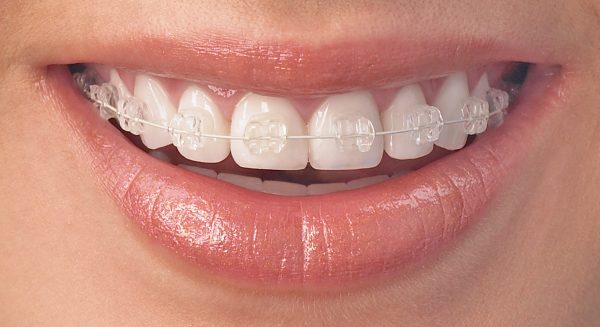Ceramic Braces Singapore
Ceramic Braces are an excellent option if you’re considering orthodontic treatment and seeking a discreet and effective solution. While it is not as discreet as aligners, it offer superior control that you can only get with fixed braces.

Ceramic Braces: A Discreet Approach to a Stunning Smile
How Are Ceramic Braces Made?
Ceramic braces are a modern and aesthetic alternative to traditional metal braces. Crafted from high-quality materials, ceramic braces are made to blend seamlessly with the natural color of your teeth. These brackets are usually machined from monocrystalline or polycrystalline aluminium oxide.
What’s good about Ceramic Braces
- Aesthetic Appeal: One of the primary advantages of ceramic braces is their discreet appearance. The brackets are designed to be less noticeable, making them an excellent choice for patients who are conscious about the cosmetic aspect of orthodontic treatment.
- Effective Alignment: Ceramic braces are more effective in correcting a wide range of orthodontic issues compared to other aesthetic options like aligners. Because they are fixed to your teeth, they are more effective in transferring the force needed to move your teeth. This is especially critical for teeth movement which are challenging, like correcting root postions or closing large spaces.
- Stain-Resistant: Made from high quality materials, ceramic braces are resistant to staining despite their light coloured appearance. This ensures that your braces will maintain their aesthetic appeal throughout the course of your treatment.

The downside of ceramic braces
- Visibility: While ceramic braces are less noticeable than metal braces, they are still visible, especially from a close distance. Some patients may prefer a completely hidden option, such as Invisalign, if discretion is a top priority.
- Cost: Ceramic braces may be slightly more expensive than traditional metal braces. It’s essential to consider your budget when exploring orthodontic treatment options.
- Brittleness: While ceramic braces are generally durable, it is more brittle compared to metal braces and are more prone to chipping. This may result in more frequent replacement of broken braces.
- Abrasiveness: One disadvantage of ceramic braces which is often missed out by many orthontists is their abrasive properties when compared to metal braces. We found that many patients who have consulted other orthodontists were not told about this feature of ceramic braces. Ceramic brackets tend to cause more tooth wear compared to metal braces. This happen if your teeth constantly rubs against the edges of the ceramic braces. If this happens, you may need to either file your teeth to even out their shape or have filling to patch up the worn parts.
The downside of ceramic braces
- Visibility: While ceramic braces are less noticeable than metal braces, they are still visible, especially from a close distance. Some patients may prefer a completely hidden option, such as Invisalign, if discretion is a top priority.
- Cost: Ceramic braces may be slightly more expensive than traditional metal braces. It’s essential to consider your budget when exploring orthodontic treatment options.
- Brittleness: While ceramic braces are generally durable, it is more brittle compared to metal braces and are more prone to chipping. This may result in more frequent replacement of broken braces.
- Abrasiveness: One disadvantage of ceramic braces which is often missed out by many orthontists is their abrasive properties when compared to metal braces. We found that many patients who have consulted other orthodontists were not told about this feature of ceramic braces. Ceramic brackets tend to cause more tooth wear compared to metal braces. This happen if your teeth constantly rubs against the edges of the ceramic braces. If this happens, you may need to either file your teeth to even out their shape or have filling to patch up the worn parts.


